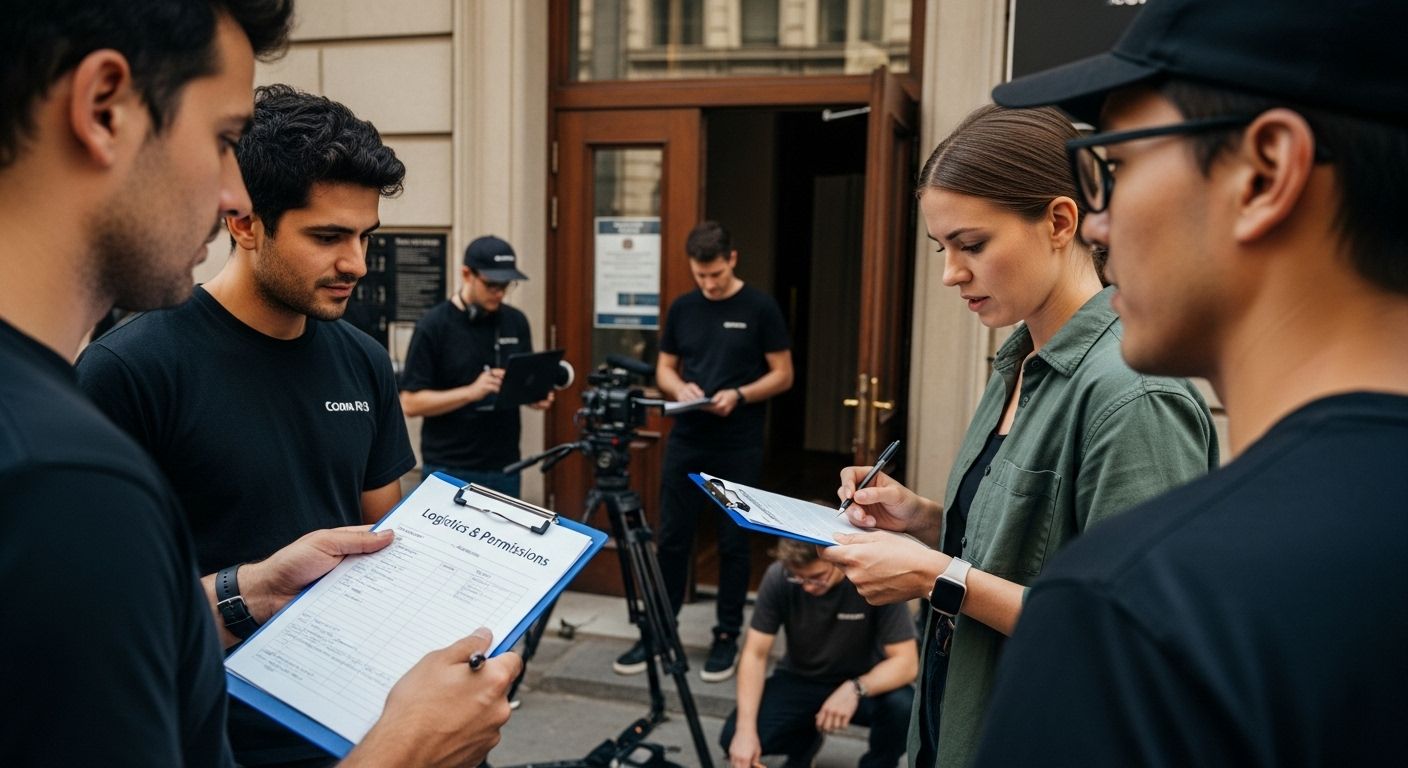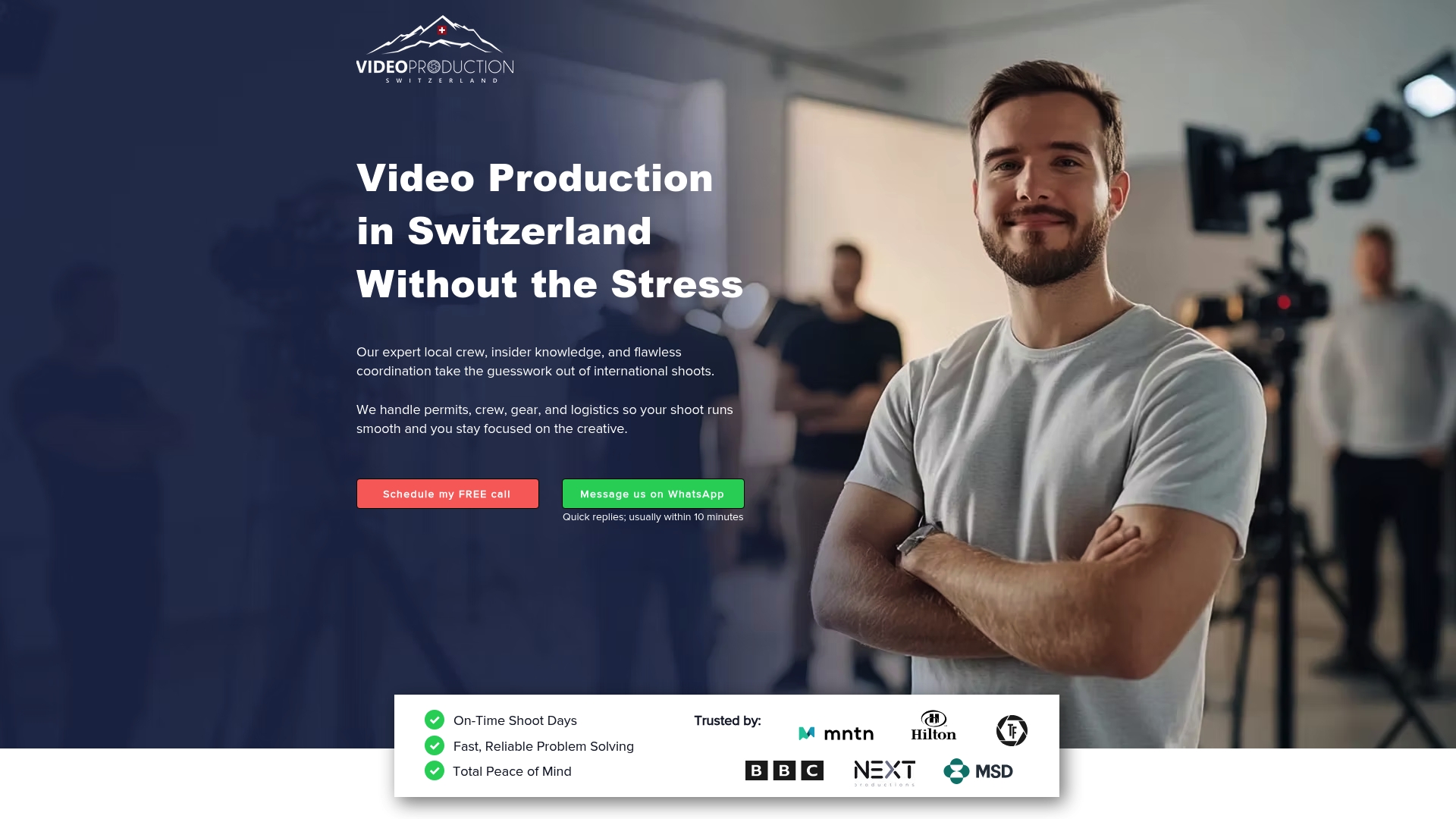How to Plan a Video Shoot: A Complete Step-by-Step Guide
- info1419758
- Aug 10
- 9 min read

Planning a video shoot often feels overwhelming. There are scripts to write, teams to assemble, and locations to lock down. But most people overlook one crucial statistic. Studies show that productions with a detailed shot list and timeline finish up to 30 percent faster than those that wing it. Think securing fancy equipment or the best camera is what really saves you time? Actually, the true secret is all in the planning. That simple blueprint could be the difference between a chaotic set and a smooth production day.
Table of Contents
Quick Summary
Defining Your Video’s Objectives and Audience
Successful video production starts with crystal clear objectives and a deep understanding of your target audience. Without precise goals and audience insights, your video risks becoming an expensive, unfocused project that fails to deliver meaningful results.
Identifying Your Core Video Goals
Before picking up a camera, you need to define exactly what you want to achieve. Goals can range from brand awareness and product promotion to educational content or storytelling. Harvard Business Review suggests breaking down objectives into specific, measurable targets. For instance, instead of a vague goal like “increase brand visibility,” aim for something concrete such as “generate 10,000 video views within the first month” or “drive 500 website conversions through video content”.
These precise objectives will guide every subsequent decision in your video production process. They determine your content strategy, visual approach, messaging, and distribution channels. A marketing video for a tech startup will look dramatically different from a documentary-style brand story or a product tutorial.
Understanding Your Target Audience
Knowing your audience is equally critical. Nielsen Norman Group research emphasizes that successful communication requires deep audience understanding beyond basic demographics. This means exploring not just age and location, but psychological factors like interests, pain points, motivations, and content consumption habits.
Create detailed audience personas that go beyond surface-level characteristics. What challenges does your audience face? What type of content resonates with them? What platforms do they use most frequently? A B2B technology video will require a different tone and approach compared to a consumer lifestyle brand video.
Consider mapping out your audience’s journey. Where will they encounter your video? What action do you want them to take after watching? These considerations will help you craft a more targeted and effective video strategy. By aligning your creative approach with audience expectations, you increase the likelihood of engagement and achieving your core objectives.
Remember that audience research is not a one-time activity. Continually refine your understanding through analytics, feedback, and emerging market trends. The most successful video productions remain adaptable and responsive to their target viewers’ evolving needs and preferences.
Developing a Practical Shoot Plan and Timeline
A comprehensive shoot plan and timeline transform your video production from a potential logistical nightmare into a streamlined, efficient process. Effective planning prevents costly delays, reduces stress, and ensures your creative vision becomes reality.
Creating a Detailed Production Schedule
Northern Arizona University’s production guide highlights the critical importance of meticulous pre-production planning. Your shoot timeline should break down every single production phase with precise milestones and deadlines. Start by working backward from your final delivery date, allocating specific time blocks for each production stage.
A robust production schedule typically includes:
Here’s a table summarizing the typical phases of a video production schedule, including example tasks for each stage as mentioned in the article:
This table provides an at-a-glance overview of what to plan for during each phase.
Pre-production tasks: Script finalization, location scouting, equipment procurement
Production phase: Shooting dates, crew availability, equipment setup times
Post-production timeline: Editing, color grading, sound design, review cycles
Consider building buffer time into your schedule. Unexpected challenges are almost guaranteed in video production, so padding your timeline with flexible margins prevents minor setbacks from cascading into major disruptions.
Developing a Comprehensive Shot List
The University of Delaware’s multimedia guide recommends creating a detailed shot list as a critical planning tool. A shot list is essentially a blueprint for your entire video shoot, documenting every required camera angle, movement, and scene composition in advance.
Your shot list should include:
Specific shots needed: Wide establishing shots, medium shots, close-ups
Camera movements: Pans, tilts, tracking shots
Lighting requirements for each shot
Estimated time needed for each setup
A well-prepared shot list allows your crew to work with maximum efficiency. By visualizing and documenting each shot beforehand, you minimize on-set confusion and reduce unnecessary time spent figuring out logistics during shooting.
Technical and Logistical Preparation
Georgia Institute of Technology’s production guide emphasizes the importance of comprehensive technical preparation. This means not just planning your creative approach, but also ensuring all practical elements are meticulously arranged.
Key logistical considerations include:
Equipment inventory and backup plans
Location permissions and access details
Crew and talent scheduling
Transportation and accommodation arrangements
Contingency plans for potential technical failures
Professional video production requires treating your timeline as a living document. Remain flexible and prepared to make real-time adjustments while maintaining your core production objectives. Regular communication with your team and consistent timeline reviews will help you stay on track and adapt to unexpected challenges.
Remember that a great shoot plan is more than a rigid schedule. It’s a strategic roadmap that balances creativity with practical execution, ensuring your video project moves smoothly from concept to completion.
Building the Right Production Team and Resources
Assembling the right team is crucial to transforming your video production from a concept to a professional finished product. Your team’s composition and expertise will directly impact the quality, efficiency, and overall success of your project.
Identifying Essential Production Roles
The Teachers Institute outlines critical roles in video production that form the backbone of a successful team. These key positions include the director, scriptwriter, camera operator, sound engineer, and editor. Each role plays a unique and vital part in bringing your creative vision to life.
To help clarify the essential roles required in most video productions, here is a table outlining each key team role and its main responsibility:
This table helps visualize the unique contributions of each core team member.

The director serves as the creative leader, translating the project’s vision into actionable instructions. The scriptwriter crafts the narrative structure, ensuring the video communicates its core message effectively. Camera operators capture the visual elements, while sound engineers guarantee high-quality audio recording. Editors then transform raw footage into a polished final product.
Consider the scale and complexity of your project when staffing. Smaller productions might require team members to wear multiple hats, while larger projects demand specialized professionals for each role.
Selecting Skilled Team Members
The UK Government Digital Service recommends a flexible approach to team composition. They suggest at least two people per project to distribute tasks effectively. One team member can focus on camera operation and sound monitoring, while another handles interviews or directs talent.
When recruiting team members, look beyond technical skills. Seek professionals who demonstrate:
Collaborative communication skills
Creative problem-solving abilities
Adaptability to changing production needs
Proven experience in similar video projects
Consider utilizing a mix of in-house talent and external freelancers. This approach provides flexibility and allows you to access specialized skills precisely when needed.
Resource Planning and Equipment Selection
The Office for Victims of Crime emphasizes the importance of comprehensive preproduction planning, particularly regarding resources and equipment. Your team’s effectiveness depends not just on skills, but on having the right tools at their disposal.
Key equipment considerations include:
High-quality cameras with appropriate resolution
Professional audio recording equipment
Lighting kits suitable for your shooting environment
Stable tripods and camera support systems
Post-production editing software
Don’t simply purchase the most expensive equipment. Match your gear to your specific project requirements. Renting specialized equipment for specific shoots can often be more cost-effective than purchasing items used infrequently.
Remember that building the right team is an ongoing process. Invest time in finding professionals who not only possess technical skills but also align with your project’s creative vision and collaborative spirit. A cohesive, skilled team can elevate a good video concept into an extraordinary final product.
Managing Logistics, Permissions, and On-Set Workflow
Successful video production hinges on seamless logistical management, comprehensive permissions, and a well-structured on-set workflow. These critical elements transform potential chaos into a smooth, professional production experience.
Securing Location Permissions and Legal Clearances
The Office for Victims of Crime emphasizes the critical importance of advance planning in video production. Obtaining proper permissions is not just a legal requirement but a fundamental aspect of professional video creation.
Key permission considerations include:
Location releases for public and private spaces
Talent release forms for individuals appearing in the video
Permits for shooting in municipal or restricted areas
Copyright clearances for any music or copyrighted materials
Start the permission process early. Some locations require weeks or even months of advance notice. Research local regulations, contact property owners, and prepare detailed documentation explaining your project’s scope and intent. Always have multiple backup locations in case of unexpected denials or last-minute complications.
Comprehensive Logistical Planning
The American Society of Media Photographers highlights that successful video projects require extensive logistical preparation. This goes beyond simple location scouting and involves creating a detailed operational blueprint for your entire production.
Critical logistical elements to plan include:
Transportation logistics for equipment and crew
Accommodation arrangements for out-of-town team members
Meal and catering plans
Equipment transportation and setup schedules
Contingency plans for potential technical or environmental challenges
Develop a comprehensive checklist that covers every potential logistical requirement. Consider factors like parking, power sources, internet connectivity, and backup equipment. The more thoroughly you plan, the more smoothly your production will run.
Establishing Efficient On-Set Workflow
On-set workflow is the heartbeat of your video production. A well-structured workflow ensures everyone understands their roles, responsibilities, and the day’s objectives. Begin each shooting day with a comprehensive team briefing that outlines specific goals, potential challenges, and communication protocols.
Key workflow management strategies include:
Clear communication channels
Defined roles and responsibilities
Precise shooting schedules
Regular check-ins and progress assessments
Flexible problem-solving approaches
Implement a hierarchical but collaborative communication structure. The director should be the primary decision-maker, but team members should feel empowered to provide input and raise potential issues quickly. Use digital tools like shared project management platforms to keep everyone aligned and informed.
Remember that successful logistics and workflow management is about anticipation and adaptability. No production goes exactly according to plan, so build flexibility into your approach. Maintain a calm, solution-oriented mindset, and be prepared to make real-time adjustments while keeping your core objectives in focus.

Frequently Asked Questions
What are the key steps to planning a successful video shoot?
Effective video shoot planning involves defining clear video objectives, understanding your target audience, developing a detailed production schedule, building the right production team, and managing logistics and permissions upfront.
How important is a shot list for a video shoot?
A shot list is crucial as it acts as a blueprint for your video shoot, documenting every required camera angle, movement, and scene composition in advance. This preparation helps reduce confusion and improves efficiency on set.
What key roles should I consider when assembling a production team?
Essential roles in a production team typically include a director, scriptwriter, camera operator, sound engineer, and editor, each contributing to the project’s overall quality and effectiveness.
How can I ensure that I have the necessary permissions for my video shoot?
To secure permissions, research local regulations, obtain location releases, talent release forms, and permits early in the planning process, as some may require weeks or months of advance notice.
Take the Stress Out of Video Shoot Planning in Switzerland
You have just learned how careful planning, clear objectives, detailed shot lists, and logistical organization are what separate seamless productions from stressful failures. But when filming in Switzerland as an international team, factors like local permits, crew sourcing, and equipment access can still stand in your way. Even with a well-crafted production schedule, things like surprise legal snags or crew miscommunications often cause delays and frustration. Our platform specializes in handling exactly these challenges so you can focus on your vision instead of complex local logistics.

Ready for a production day where everything is set up and handled by local professionals with over twenty years of experience? Let Video Production Switzerland arrange trusted crews, secure hard-to-get permits, and coordinate every on-set detail for you. Book your free consultation today and discover how effortless your next Swiss shoot can feel. Act now to lock in the support you need for reliable, on-time execution.
Recommended

Comments